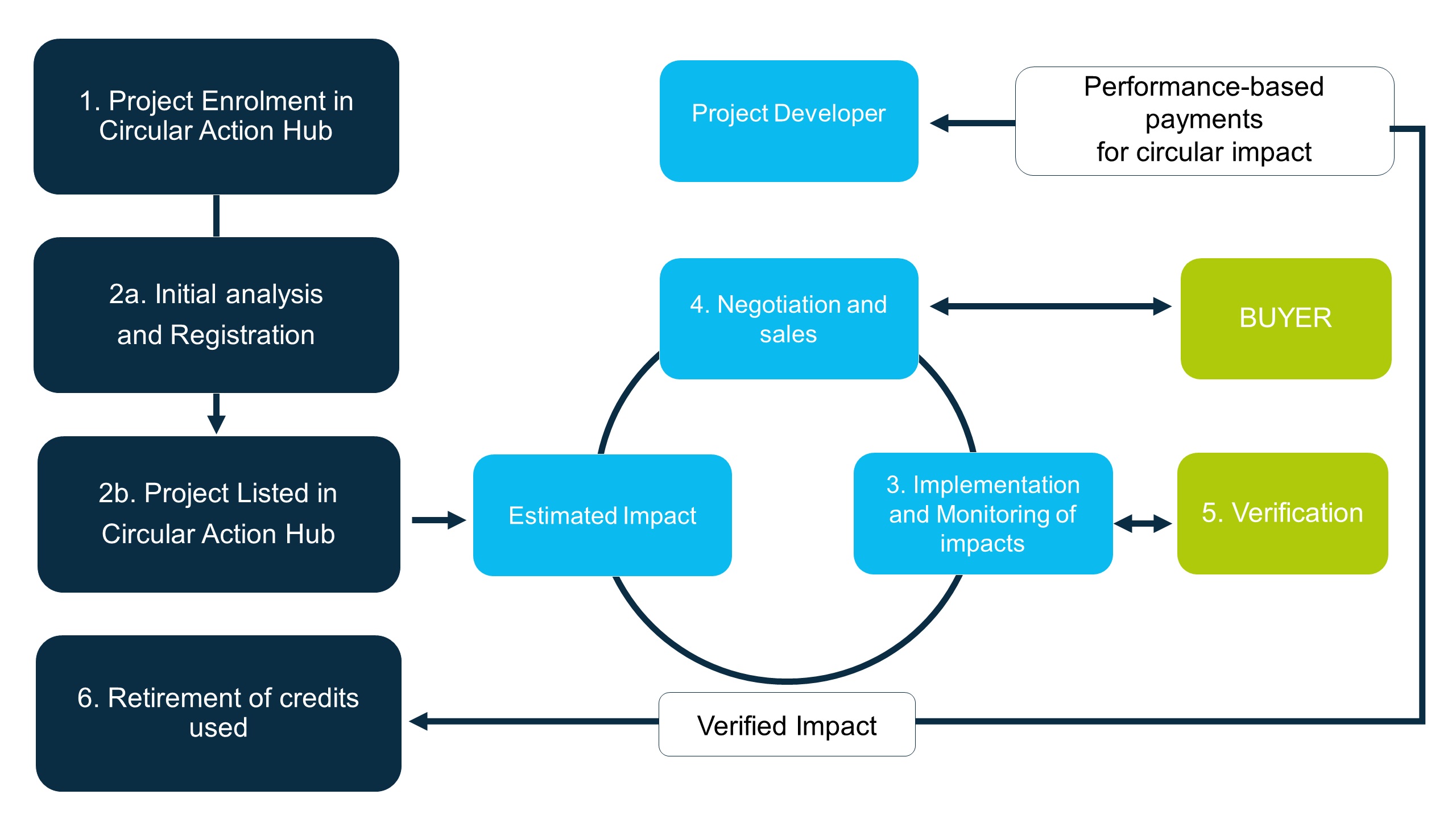What is a Circular Credit?
A Circular Credit™ represents the service of recovery (collection, sorting) and appropriate destination of 1 metric tonne of waste material that is inappropriately discarded, causing pollution of our natural environment.
The objective of the credits is to facilitate the contracting of services that remove waste materials from the environment and send them to an appropriate, responsible destination. The destination of residues varies depending on the circumstance of the project or operation and the availability of economically viable options. In some cases, it may be a recycling plant; in others, where this option is not available, it could be the next best alternative available.
The use of Circular Credits enables companies and individuals to compensate for the volume of residues they feel responsible for, through a one-in-one-out approach to reducing their waste footprint.
Circular Credits can be issued for any type of material, including plastics, beverage cartons, glass, paper, metals, e-waste, tyres. In the future, the Hub will aim at including organic material as well. All credits for the same material are fungible, but buyers may want to select them by country of origin.
The Project Cycle - How to create circular credits
Traditional project cycles for environmental markets (e.g., carbon markets) require the validation, registration, independent verification, and issuance of credits before developers can receive any financial return.
The Circular Credits Mechanism (CCM) adopts an inverted project cycle where developers can post their offers based on self- declarations that are verified only after projects secure financial support. Transaction costs are covered by the buyers of environmental services.
Projects must follow the process described below to create and sell credits under the Circular Credits Mechanism:

- Project registration form (PRF) completion describing the project activities, the situation prior to the project, the expected project benefits, and the monitoring plan.
2. Analysis and registration of the PRF, done by BVRio’s technical team, to ensure data completeness. The project proponent makes a self-declaration about the project’s expected environmental impact and its compliance with the CCS’s Principles and Criteria. After this:
- The project is registered – an Estimated Amount of Circular Credits is allocated to the Project
- Implementation of project activities and monitoring of results, updating the Estimating Amount reported to the Hub.
3. Negotiation and transaction of credits – Once a potential buyer or investor expresses interest in the project, the Hub will help parties negotiate and conclude a transaction, which could result in financial support to the project.
4. Verification of the results of the project – at this stage, the buyer will need to contract for verification of the project’s impact and its compliance with the Circular Actino Standar’s Principles and Criteria. Once verification is concluded, the Verified Amount of Circular Credits is allocated to the Project and transferred to the Buyer.
5. Retirement of circular credits – once credits are used for any specific claim, the party must inform the Circular Action Hub in order to have these credits retired from the Project’s Registry.
Using credits and associated claims
The objective of Circular Credits is to allow companies to reduce their waste footprint by contributing (via the financial value of credits) to activities that mitigate their negative environmental impact.
The CCM was designed as an international scheme, so that Circular Credits can be created in one country and used in another one. This would enable transnational support for waste collection and recycling activities.
The use of Circular Credits will enable companies to claim that they mitigated the impact of a certain amount of post-consumer waste pollution derived from their operations. It does not, however, enable companies to make claims such as “plastic neutral”, “waste offset”, etc., unless complementary measures are put in place. For this, the CCM recommends adoption of the 3RI Guidelines for Leadership in Corporate Plastic Accounting.


